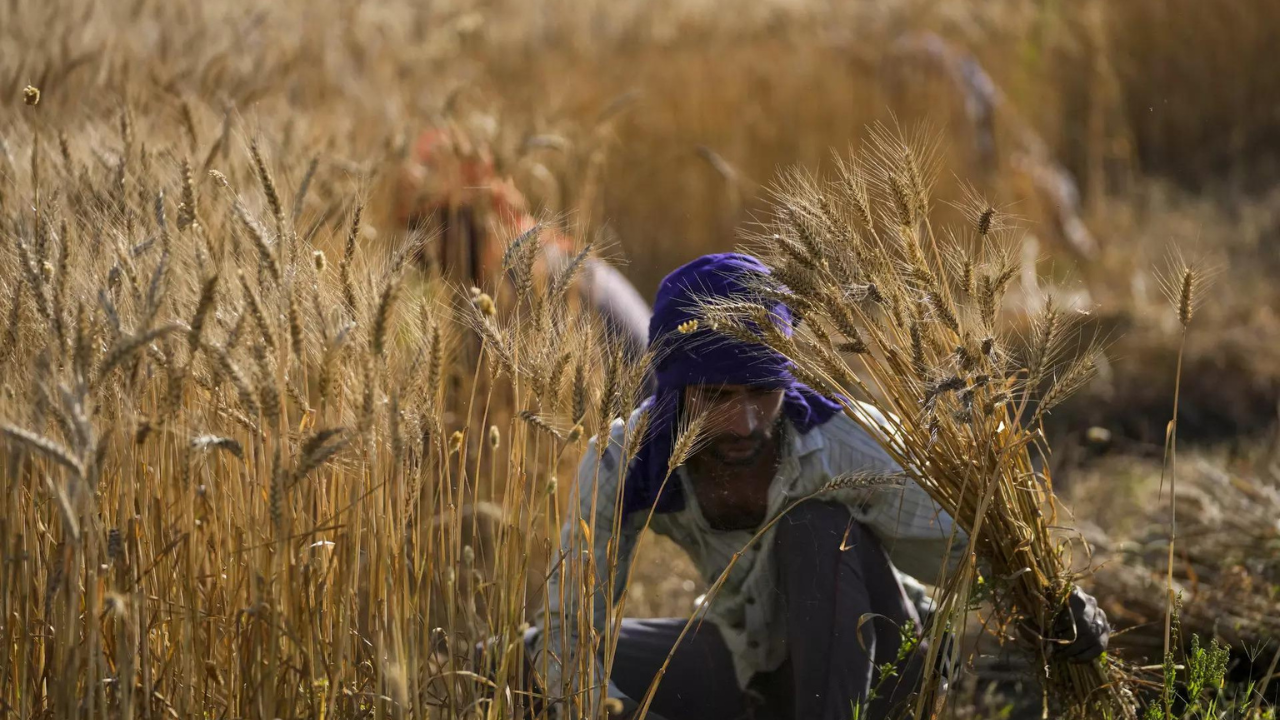Government Aims for 114 MT Wheat Output by 2023-24

Government Aims for 114 MT Wheat Output by 2023-24
In a significant move to bolster food security and meet the growing demand of the population, the government has set an ambitious target of producing 114 million tonnes (MT) of wheat in the fiscal year 2023-24.
This comes against the backdrop of various challenges and opportunities that the agricultural sector has been experiencing. Here, we delve into the specifics of this announcement, its significance, challenges, and the roadmap the government plans to adopt.

In comparison to the expected output of 112.74 MT during the previous season, the government on Tuesday set a higher target for wheat production of 114 million tonnes (MT) for the rabi season of 2023–24.
To deal with harsh climatic circumstances like the heat wave and rain right before harvest in the previous two years, the government is seeking to plant climate-resistant varieties on around 60% of the total wheat acreage of 30 million hectares (MH).
The increased wheat production goal is anticipated as a result of enough rainfall being predicted for several regions of the nation through the third week of October, which is anticipated to increase soil moisture levels. Following the harvest of kharif crops, sowing of rabi crops, including wheat, pulses, and oilseeds, is anticipated to start in the later half of the following month.
Wheat purchases by the Food Corporation of India (FCI) fell by 130% to 18.79 MT in the 2022–23 marketing season as a result of reduced output. Only 26.2 MT of the grain could be bought from the farmers in the current year by FCI.

For the crop year (July-June) 2023–24, the government has set somewhat higher foodgrain production objectives of 332 MT, of which the rabi season would contribute 161.2 MT.
The goal has been established for a production of 13.65 MT of the pulses variety for the 2023–24 crop year for chana, which contributed 50% of the nation’s total output of 27.5 MT of pulses in the 2022–23 crop year.
The production goal for mustard has been set at 13.1 MT for the crop in 2023–2024, up from 12.49 MT in 2022–2023. According to the official, efforts would be concentrated on reducing the nation’s reliance on imported edible oil from its present level of 56% to 36% during the next five years.
Wheat is a staple food for a large portion of the global population, especially in countries like India. As populations rise and urbanization expands, the demand for wheat and wheat products has seen a consistent surge.
To meet this increasing demand, governments across the globe are focusing on improving wheat production, both in terms of quantity and quality.

Achieving this target would significantly enhance the nation’s food security, ensuring that the needs of the population are met without resorting to excessive imports.
Wheat is not just a food product. It plays a pivotal role in the nation’s agricultural economy. Achieving this target can result in a positive impact on GDP, offer better returns for farmers, and stabilize market prices.
Meeting domestic demand can also reduce the dependency on imports, giving the country better bargaining power in international trade.change has led to unpredictable weather patterns, which can have a detrimental impact on crop yields.The spread of new or drug-resistant pests and diseases can hinder production.
Even if the production target is achieved, lack of adequate storage and efficient distribution can result in post-harvest losses.Depleting water tables and shrinking agricultural land due to urbanization and industrialization can be a major concern.Lack of access to modern farming techniques and machinery can hinder the efforts of achieving the targeted yield.
Enhanced focus on developing high-yield, disease-resistant, and climate-resilient wheat varieties.Improve storage facilities and logistics to reduce post-harvest losses.
Encourage the adoption of sustainable farming practices that focus on soil health, water conservation, and reduced use of chemicals.Train farmers on modern farming techniques, proper use of fertilizers, and pest management.Introduce and promote the use of technology, from drip irrigation to drones, to enhance farming efficiency and output.Provide subsidies and financial incentives for farmers to adopt better practices and invest in machinery.
The government’s decision to set a 114 MT wheat production target for 2023-24 showcases its commitment to ensuring food security and economic stability.

While challenges are aplenty, a concerted effort from all stakeholders, from researchers and policymakers to farmers and the agri-business sector, can make this vision a reality.
The roadmap, if executed effectively, can not only help achieve this target but also set the foundation for sustainable and efficient agricultural practices in the years to come.





